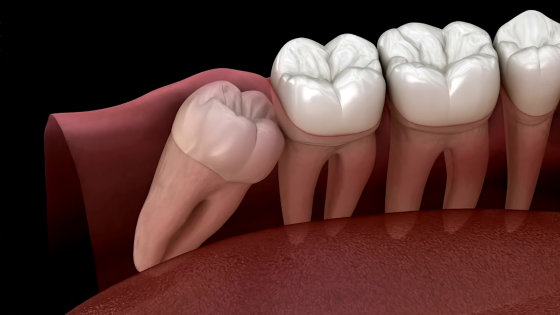An example showing that the human body is still evolving at this very moment

The human body has undergone many changes over the years, but even if you don't notice it, this kind of 'evolution' is happening now. A new team of anatomists reports that more and more people are growing up, leaving behind 'forearm blood vessels,' which should otherwise disappear during growth. The research team claims that this evolutionary speed is 'significant in a short period of time.'
Recently increased prevalence of the human median artery of the forearm: A microevolutionary change --Lucas --2020 --Journal of Anatomy --Wiley Online Library
Forearm artery reveals human evolution continues – News
https://news.flinders.edu.au/blog/2020/10/08/forearm-artery-reveals-human-evolution-continues/
Since the 19th century, the research team of Dr. Teagan Lucas, a lecturer in medicine and public health at Flinders University, Dr. Machey Henneberg, a professor of anthropology and anatomy at the University of Adelaide, and Dr. Jaraya Kumaratilake, have been working on the median artery. Announced that the number of people who grow up while leaving is increasing.
The content of the announcement can also be seen from the following.
Forearm artery reveals humans evolving from changes in natural selection --YouTube
The median artery is the main blood vessel that supplies blood to the human hand and forearm, and is usually created as the person grows in the mother's body and disappears as the other blood vessels develop. Eventually, the radial and ulnar arteries will replace the median arteries and supply blood to the hands. For this reason, many adults do not have a median artery, but in recent years, more and more people have a median artery along with the radial artery and the radial artery.
The part indicated by the arrow is the median artery.

The research team examined the anatomical literature published so far and analyzed the bodies donated to the University of Adelaide, revealing that as many as one-third of people in Australia already have a median artery. Did. This trend will continue for the next 80 years, and the researchers believe that the presence of the median artery will become more common to humans.
Researchers also believe that in 2020, humanity will evolve faster than any other point in the last 250 years, given the epidemic of the median artery.
'Since the 18th century, anatomists have been studying median artery epidemics in adults, and our study shows an increase in cases. In the mid-1880s, about 10% of people had median arteries. However, it has increased to 30% in the 20th century. From an evolutionary point of view, this is a significant increase in the short term, 'the research team said. This increase is believed to result from genetic mutations associated with the development of the median arteries, changes in the health of the mother during pregnancy, or both. If this epidemic continues, most people will have a median artery by 2100.
According to Maciej Henneberg, a professor at the University of Zurich who participated in the study, the presence of the median artery is medically beneficial because it increases blood supply and provides a means when surgery requires a blood vessel transplant. That's right.
In addition to the presence of the median artery, (PDF file) humans have experienced the development of

Related Posts:







